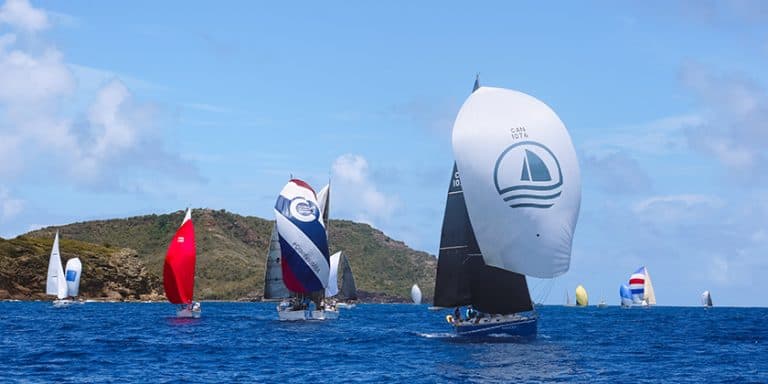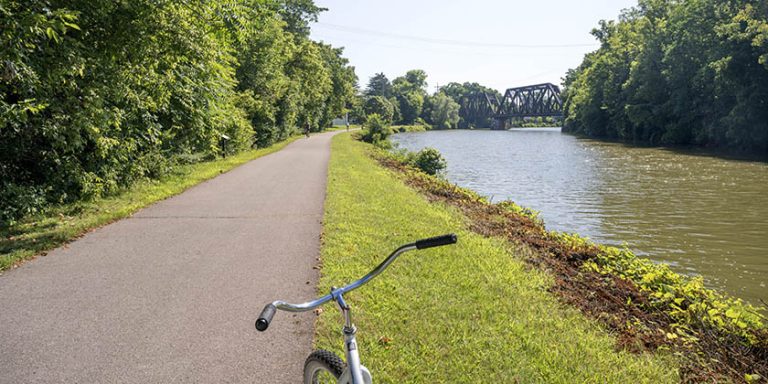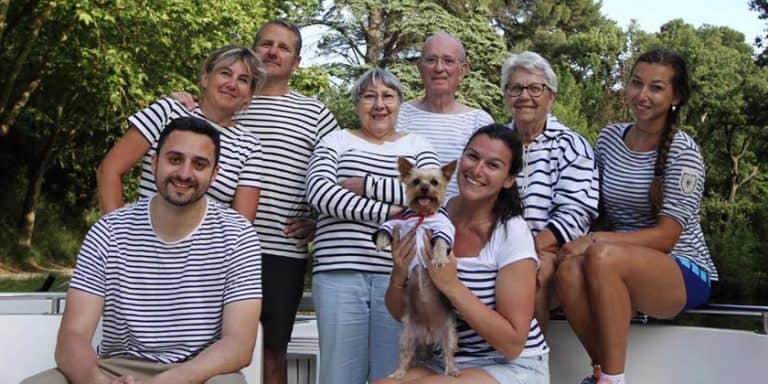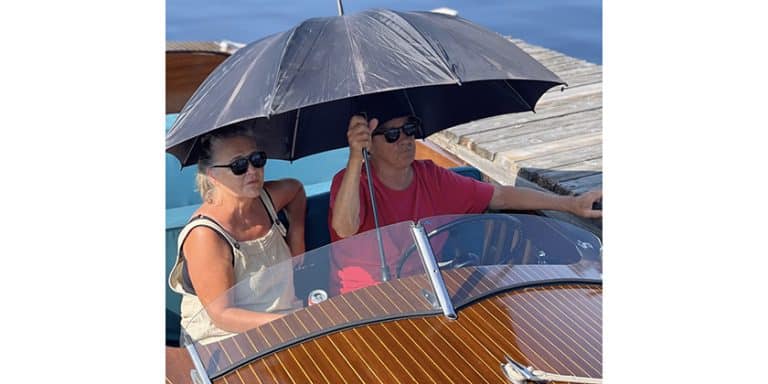Planning Your Dream Cruise: 5 – Benefits of Part-time Cruising

 This is the fifth in a series of articles by Sheryl and Paul Shard who have been cruising internationally since 1989.
This is the fifth in a series of articles by Sheryl and Paul Shard who have been cruising internationally since 1989.
In previous editions of CY, we have talked about preparations for cruising, choosing destinations, potential costs, managing money from afar, and earning money while cruising. In Part 5 we discuss the option of Part-time Cruising, why more people are doing it and the benefits this style of cruising offers with regards to work, family relations, and cruising pleasure.
Why Part-time Cruising?
There is a misunderstood notion that to become a long-term, long-distance cruising sailor it is necessary to truly cut the docklines by selling everything and leaving. You know, get rid of the house, quit your job, and wave goodbye to the rat race. Paul and I have been cruising now for 18 years and can assure you that this just isn’t so. In fact, the happiest long-term cruisers we meet are most often those who have found a pleasurable balance between life afloat and life ashore.
Too Much of a Good Thing
Our first long-term cruise was a three-year Atlantic Circle that we did from 1989 to 1992. We set sail on my 30th birthday and, to help finance the trip, we opted for the “sell up and sail” route. We lived aboard full-time, paid our way through a combination of savings and money we earned along the way, kept in touch with family by weekly phone calls from phone booths (no e-mail in those days) and due to our limited budget only saw the family when they came to visit us for quality-time together on the boat. Flights home were not in the cruising kitty on that cruise.
Our new full-time cruising life was all that we dreamed of. Every day was filled with new people and places; we were living outdoors in the sunshine in harmony with the winds and the weather. Our energy levels soared since we were getting lots of daily exercise swimming, snorkelling, diving and walking. We were gaining new confidence as we overcame challenges and increased our experience. Our schedule was set by the seasons, not work deadlines. Stress was short-term – dealing with foul weather, entering unfamiliar harbours, someone anchoring too close. Things like that. What life could be better?
Then towards the end of the second year we started noticing a change in ourselves. We realized we weren’t getting as excited about the incredible turquoise water or the amazing profusion of flowers in the tropics as we had been at the beginning of our adventure. We started getting frustrated by the length of time it took to do simple tasks such as laundry (there’s never a laundromat nearby when you need one. Yes, I new boat is going to have a washing machine!) or buying a spare part when you don’t speak the language (how do you say macerator pump in Portuguese, anyway?).
At the beginning of our voyage we found these obstacles just added to the adventure. They were fun and challenging. By the third year out we were getting travel weary. We were taking things for granted and not having as much fun anymore. We knew you could “get too much of a good thing” in life but it never occurred to us that this would apply to sailing!!
We were surprised we were getting so cranky. Then we got news that Paul’s brother, who he’d always been close to, was getting engaged. He’d been dating his fiancé for over a year and we’d never even met the woman. It made us realize how long we’d been away and how much we’d lost touch with our families who mean a lot to us. It was the straw that broke the camel’s back and we headed home.
When we got back to Canada in the fall of 1992, we had a new rush of energy as we reconnected with friends and family. I couldn’t believe the joy I felt when I saw our old neighbour go down the street walking his dog at the same ol’ time as always – a comforting pattern of consistency that had been missing from my days on board. And at home I could pick up the phone and speak to vendors in English to find what I was looking for. In foreign countries Paul and I often had to walk or take the bus all over town carrying a sample of what we were looking for to show to shop keepers we couldn’t speak to well enough in their language over the phone. And at home we knew where everything was – the chandlery, the grocery store, the post office, and the hardware store. When you’re travelling to new places on a regular basis, all these basic suppliers have to be sought out each time and that gets tiring after a while. Simple things really.
Achieving a Balance
Over the years we have noticed there is a pattern with full-timers in the cruising community. No matter how gung-ho people are about living aboard full-time, after about 2-3 years out there they often make a change. Either they give up cruising altogether and get into something entirely new or just take a break and stop for a while, then go back to cruising full-time for another round.
After almost two years at home, Paul and I got our needed fix of routine, technology and, for me, bubble baths, and were ready for the cruising life again. But when we headed south on Voyage 2 in the fall of 1994, it was for 6 months on and 6 months off, and we have kept this cruising + life ashore pattern up quite happily ever since. Now we get the best of both worlds and are always excited about where we are and where we’re heading to whether ashore or afloat. This combination works for us. For other cruisers, the time periods differ or they get a balance of shorelife by stopping in a place for a while with the boat and becoming a part of the community.
Sailing authors, Lynn and Larry Pardy, of “go small, go now” fame who have been cruising for decades often rented a home in a foreign port for the winter while they were cruising and took the opportunity to do work on their boat and complete book assignments. Time ashore doesn’t have to be at home. Like us, they now have a permanent home base they return to regularly yet still continue their adventurous long-term cruising lifestyle.
It’s all a question of balance, I think. When your life is “work, work, work” and nothing else, it’s not surprising that you might feel the need to break lose and get time for yourself and your mate without a demanding schedule dictating your life. But often when you’ve been away from it for a while you start to see the positive sides of your work-a-day life and miss them.
A physiotherapist friend of ours, Sue, and her husband did a 2-year cruise to the Caribbean and Sue discovered she really missed her work. “I always enjoyed my job but was getting tired of all the driving I had to do in awful Canadian weather to visit patients at home,” she says, “but I never realized until we went away for so long what a sense of accomplishment and satisfaction that my job gave me everyday. My work gives me a feeling of value and purpose that I just couldn’t replace with my achievements while cruising. I was happy to get home although I love cruising and we’re planning another 1-2 year cruise in the future. It gave me a new perspective. Now when I have a frustrating day at work I don’t lose sight of all the positive things the day has given me.”
Reasons for Part-time Cruising
There are lots of reasons people opt for cruising part-time and finances, of course, is a big one. Not everyone can afford to head off for long periods of time. However with the flexible work programs available now the opportunity to enjoy some part-time cruising has never been better. By arranging a leave-of-absence or sabbatical, or by taking time between contracts, part-time cruising suddenly becomes a possibility. Part-time cruising allows you to maintain your connections and skills in the work force and keeps you up-to-date with your industry. Lots of our cruising friends are semi-retired and do a stint at home at their company for regular periods during the year. They always return to the boat toting lots of new boat gear to add to the boat now that their funds are topped up! Teaching friends cruise for the summer, or share a class and teach only one semester a year. Some participate in a program whereby they work at 80% of their salary for 4 years while the rest is put into savings to pay for a year’s burnout prevention sabbatical in the 5th year.
Sometimes the reasons for cruising part-time are not financial or family-oriented but a matter of diverse interests. In Gibraltar we met a 70-year-old single-handed sailor on a circumnavigation. Every year he hauled his boat out for the winter to fly home to Nevada where he was in charge of the Ski Patrol! (When I grow up I want to be like him.) He was not about to miss one winter on the slopes. His love of life and constant activity kept his mind and body fit as a fiddle.
On the other side of the coin, if your health or fitness level isn’t what is used to be and you love cruising but find it difficult now, part-time cruising can be healing whereas full-time cruising may be exhausting or prevent you from receiving necessary regular medical treatments.
Often part-time cruising solves the dilemma where one partner loves cruising and the other doesn’t. We have met many cruising couples that have lived aboard happily for ages as long as they only cruise for part of the year to keep one of them happy, and then, for example, travel ashore or go home to spend time with the grandchildren for another mutually agreed upon part of the year. A matter of give and take.
The benefits and reasons for opting to cruise part-time are as many and varied as the reasons that people love boating and heading to sea. If you have been dreaming of the cruising life but can’t see a way or have a desire to make it full-time, consider the many options available to you for part-time cruising.
In Part 6: Maintaining a Home Base while Cruising in the next issue of CY, we’ll continue the topic of part-time cruising and discuss the pros and cons of maintaining a home base while cruising, choosing a place to store your boat in a foreign port when you’re away as well as assuring its security while you’re gone, and customs issues that might arise storing your boat overseas.
Paul and Sheryl Shard are the authors of the bestselling book, “Sail Away! A Guide to Outfitting and Provisioning for Cruising” and the hosts of the award-winning sailing TV series, “Distant Shores” which is also available on DVD. They have just sold their Classic 37 sailboat, Two-Step, their cruising home for nearly 20 years, and will be continuing their adventures aboard their new Southerly 42. Visit their website at www.distantshores.ca





























